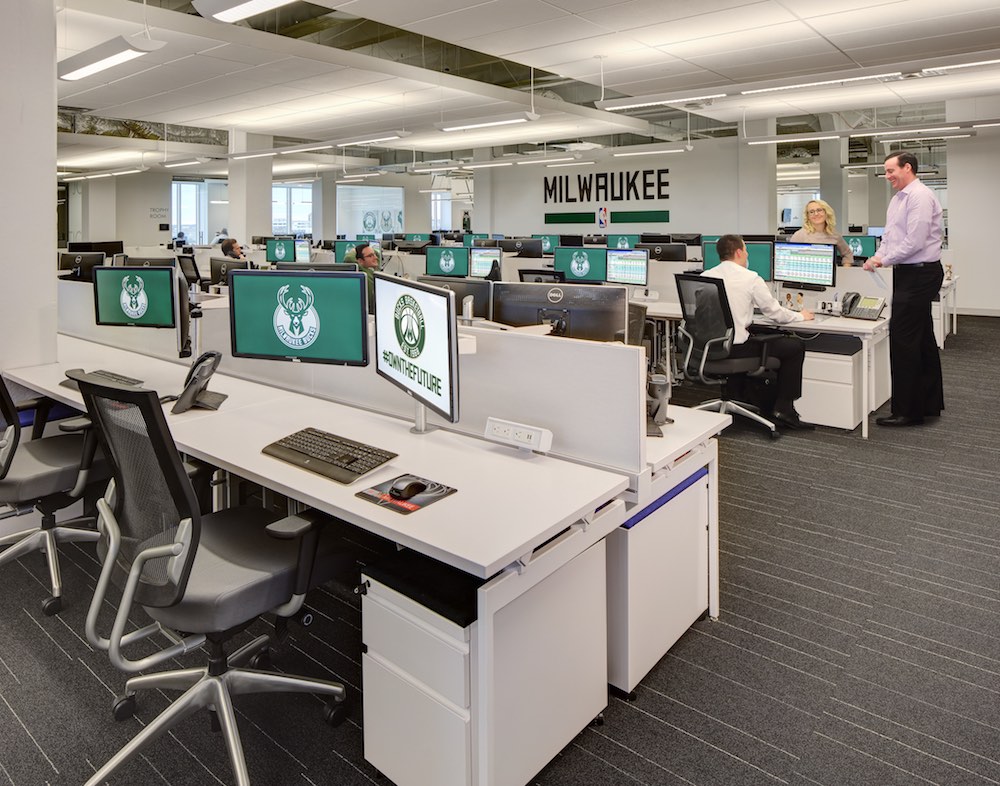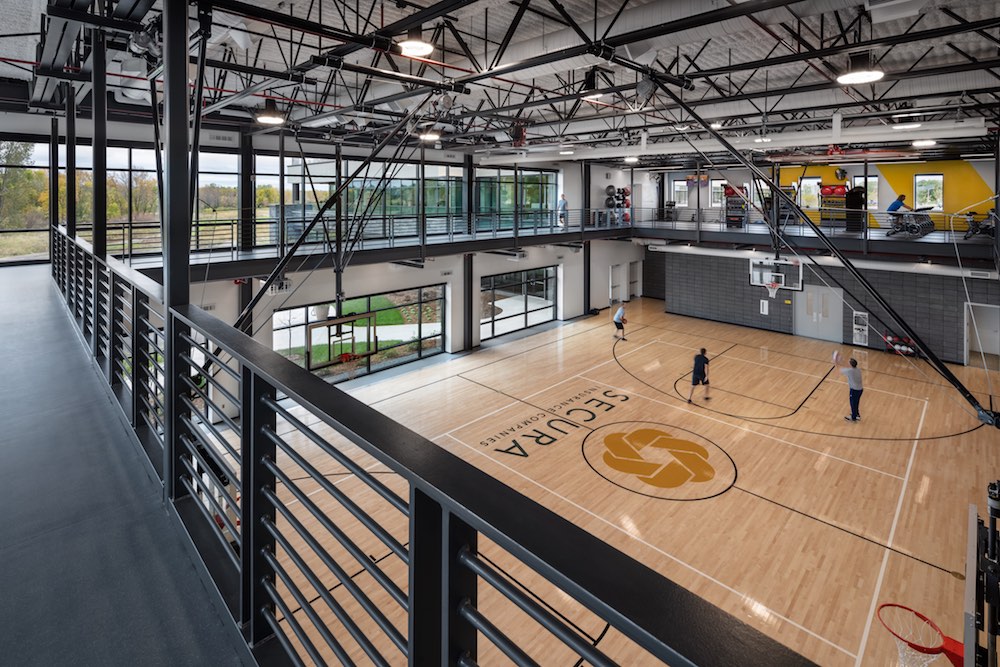Heather Turner Loth explores how the physical environment plays a role in enhancing employee well-being.

The COVID-19 pandemic certainly created an environment ripe for adapting, perhaps like none we’ve seen before. As the new normal begins to take form, companies get to choose what of their current or previous workplace environment they would like to carry forward, and what aspects they would like to change or even eliminate all together. These aspects can range from policies, culture, the physical environment to technology. There are so many considerations for each individual company about the future of their work and the workplace, but one thing most companies are choosing to elevate is a focus on overall employee well-being; it is no longer an added benefit, but an essential tenant companies must embrace in order to attract, engage and retain top talent for a thriving organization. As companies examine their real estate and wonder what the best use is going forward, starting with asking questions about how it can support employees’ holistic well-being is a great place to start.
Taking the Current Pulse of the Workplace
In a recent study of their employees, “The Next Great Disruption Is Hybrid Work—Are We Ready?” Microsoft assessed the current and future state of the workplace. According to their research, the pandemic may have seen a self-reported increase in productivity for many, but at a potential long-term human cost. “One in five global survey respondents say their employer doesn’t care about their work-life balance. Fifty-four percent feel overworked. Thirty-nine percent feel exhausted. And trillions of productivity signals from Microsoft 365 quantify the precise digital exhaustion workers are feeling.” Although working from home offered increased flexibility, it also blurred the line between work and free time with the digital intensity of workers’ day increasing substantially. Between February of 2020 and February of 2021, time spent on Microsoft Teams meetings more than doubled (2.5x) globally and continues to climb. I personally can attest to this increase in my own day to day interactions. Average meeting times increased from 35 to 45 minutes and Teams users are sending 45% more chats per week and 42% more chats per person after hours—a number that continues to rise. Workers are feeling an incredible amount of pressure to keep up with demand at the expense of their well-being whether they are remote, hybrid or an in-office employee.

Five Essential Elements of Well-Being
Since the pandemic, there is an increasing awareness that an employee’s well-being extends further than their physical health. According to Gallup, there are five essential elements of well-being: career, social, financial, physical and community. As the competition for talent continues to heat up, a more holistic view of well-being is becoming a serious differentiator in the decision-making process for people when weighing options between different companies or even their current employer.
Physical
The physical environment, as well as behavior modeling within a company culture, can play a big role in fostering and supporting the essential elements of well-being. Fitness facilities, outdoor spaces, respite zones or wellness rooms within the work environment are great ways to support physical well-being. However, these spaces can fail to achieve that intent if leadership does not model an, “its ok to use this space or amenity” approach as part of their cultural behaviors. Providing programming for these spaces, such as step challenges linked to healthcare coverage or weekly yoga classes over lunch, will help encourage employee use.
The physical spaces should be strategically designed to support the outcomes a company wants. In the last several decades, there has been a pendulum swing from highly private work environments to fully open office layouts. In fully open environments, noise transfer and a lack of privacy can cause increased stress levels, taking a toll on a person’s health. Conversely, for some people, closed office settings can feel isolating and lonely, which can also adversely affect their health. If transitioning between closed and open office work environments, employees should be given guidance on new expectations and behaviors to anticipate the change. Access to natural daylight and views of the outdoors also have a direct impact on emotional and mental well-being. Considerations on placement of shared spaces versus individual spaces that provide the greatest amount of light to the largest number of employees is a great strategy to enhancing employee well-being.

Social + Community
The physical environment also supports social and community well-being through dynamic collaboration zones and gathering areas. For example, spaces outside conference rooms, tables in corridors and offering locally sourced coffee stocked kitchenettes can increase interactions and support the community. Using spaces and amenities to foster planned and impromptu collaboration can further elevate social interactions and career development by encouraging interaction with employees from a variety of departments and levels. A key to these spaces is providing plug and play technology, along with modeled behavior from leadership using these spaces for quick conversations or destinations to connect. A company can also utilize their space to support their local community and organizations their employees belong to through things like multi-purposes spaces for after hours use, or hosting events such as pop-up art installations in the main lobby.
Environmental branding throughout a space can also celebrate a company or an individual’s efforts. Employees tend to feel a greater sense of pride in their place of employment when it supports causes and organizations beyond themselves. When considering the next generation of talent, this facet is key. According to Deloitte, to win the hearts of Generation Z, employers will need to highlight their efforts to be good global citizens. A company’s actions will speak louder than words. Spaces or displays that demonstrate their commitment to causes and the community, for example, make great interview tour highlight spots for prospective talent.
Career + Financial
Supporting an employee’s career and financial well-being tends to be delivered through human resource programming, such as career coaching or financial planning services. The physical environment, however, can be considered another tool in a human resource professional’s toolbox to help support these elements. For career well-being, considerations can be given to employee opportunities for career development, training or coaching through space allocation and use. For more relaxed, casual conversations or mentoring, soft seating areas resembling a homelike environment and equipped with technology to access information throughout a conversation may be a unique offering to consider. Training and coaching could happen in traditional classroom style meeting spaces; however, they could also occur in technology-rich, interactive learning labs that elevate role-playing or the testing of services or products. Support from the physical environment for financial well-being can also include traditional meeting spaces for outside representatives to share financial planning information. An onsite ATM or kiosk may be another option to provide employees further ease for their financial needs.

Behavior Modeling
For any transition in the physical space to be successful, such as increasing collaborative spaces or increased access to amenities, it must be affirmed by leadership, including through example. If employees only ever see executives in their private offices and not utilizing spaces such as huddle rooms or collaboration zones, they will be hesitant to do so themselves. The reverse also applies – if leaders set cultural norms, employees are likely to follow, or at least feel the freedom to use the amenities and spaces provided to them. Expectations should be spoken rather than unspoken, such as how much time a day an employee can spend working in a work café vs at their desk, so people understand what the limitations and possibilities are. Removing ambiguity gives employees psychological safety and improves the role of management by potentially avoiding uncomfortable situations by discovering they have different expectations than their employees.
A focus on employee well-being applies to companies returning to fully in person work settings as much as those choosing to move forward with a hybrid system of remote and in-person work. There may be an assumption that less employees in a physical space equates to less of a need to promote well-being through the physical environment, but this simply isn’t true. There is a heightened urgency to show employees they are cared for and valued in today’s workplace climate – or at least the competition thinks so. Major news outlets from the New York Times, to Forbes, to the Wall Street Journal, to the Washington Post and more are reporting on the current hot job market, with a record number of Americans transitioning jobs this year. For a host of reasons – largely triggered, intensified, or created by the pandemic—many employers are finding themselves in an offensive rather than defensive position, actively or proactively fighting for top talent. Although many factors go into an employee’s decision about where they will work or stay, a company’s physical environment can speak volumes about their commitment to employee well-being.

